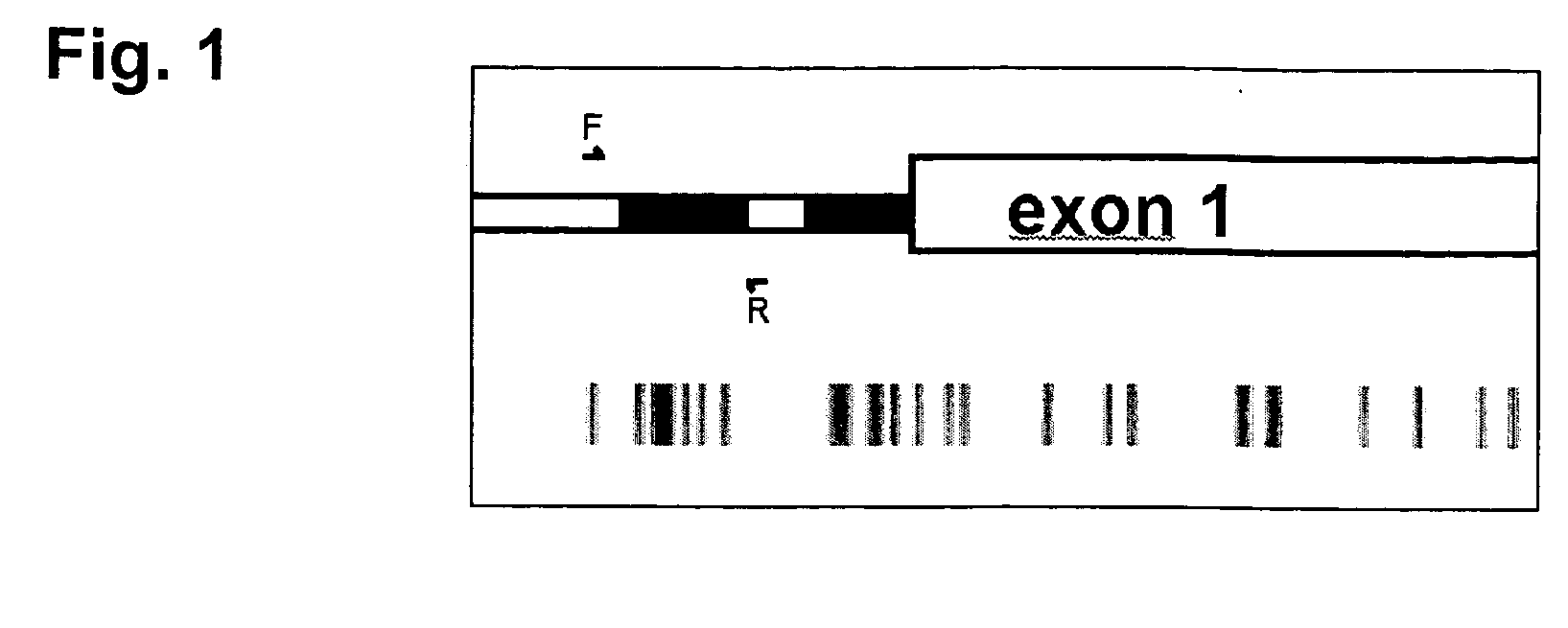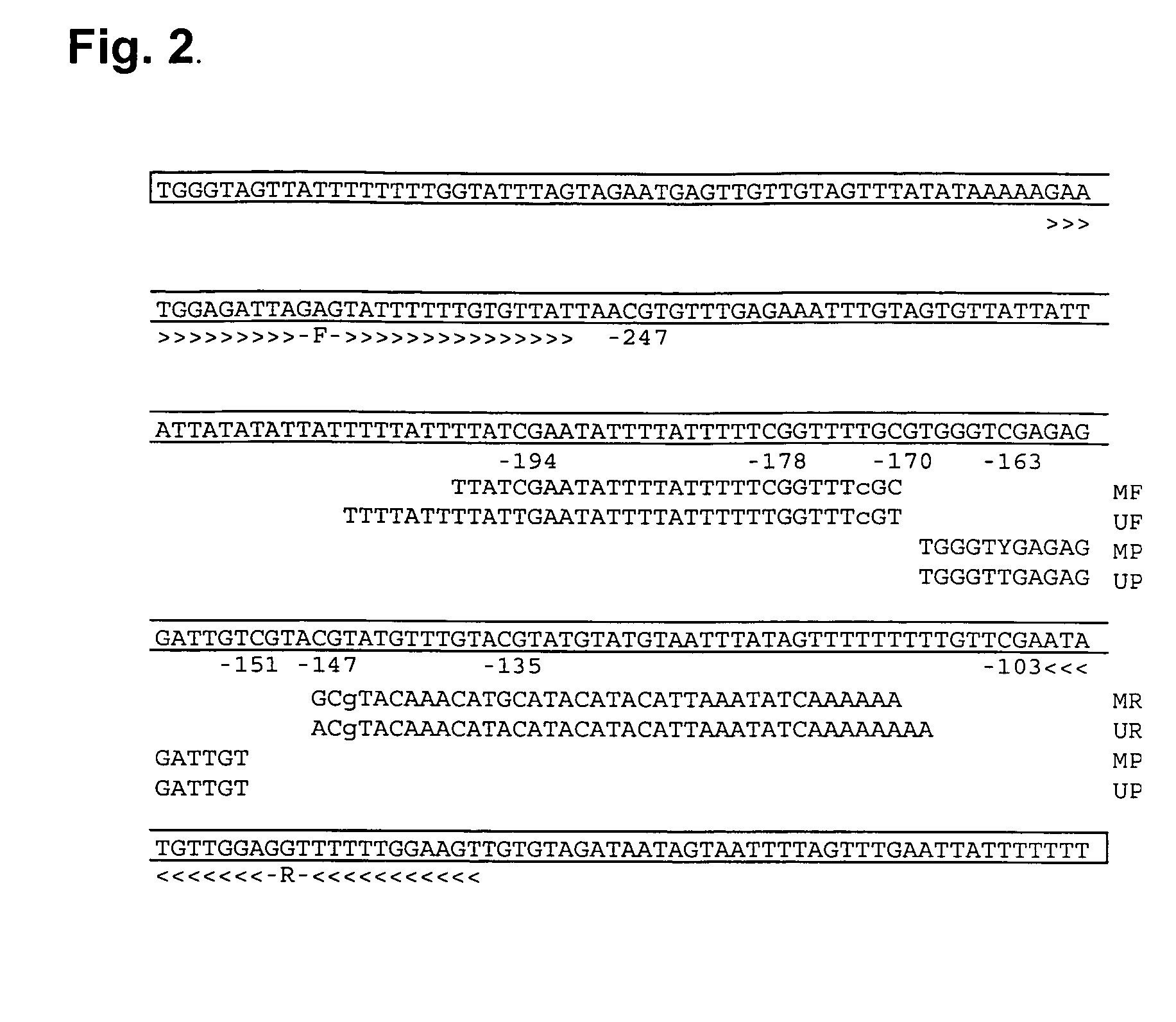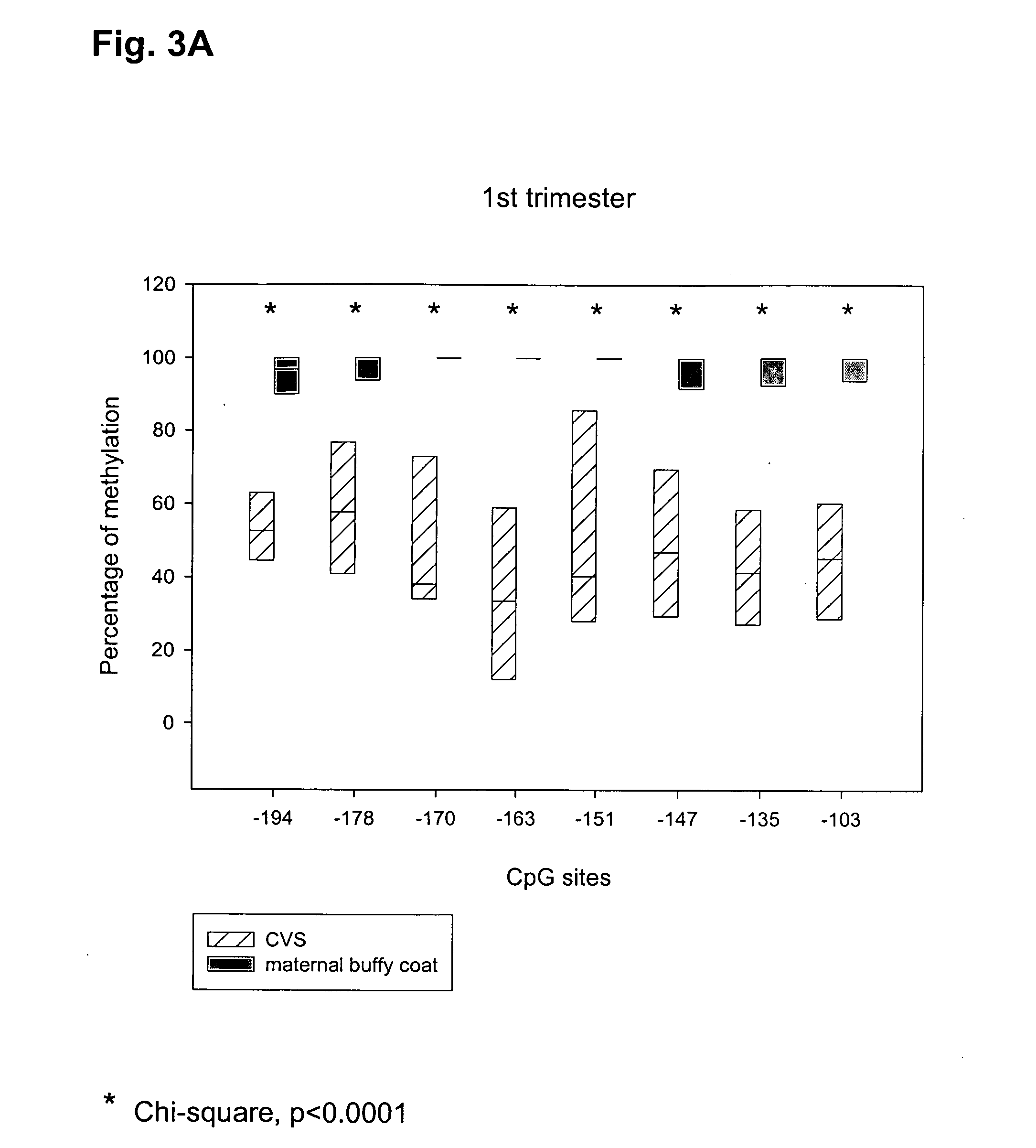Marker for prenatal diagnosis and monitoring
a prenatal diagnosis and monitoring technology, applied in the field of prenatal diagnosis and monitoring, can solve the problems of presenting an appreciable risk to both the mother and the fetus, major limitations of conventional methods, and invasive methods
- Summary
- Abstract
- Description
- Claims
- Application Information
AI Technical Summary
Benefits of technology
Problems solved by technology
Method used
Image
Examples
examples
[0084] The following examples are provided by way of illustration only and not by way of limitation. Those of skill in the art will readily recognize a variety of non-critical parameters that could be changed or modified to yield essentially similar results.
[0085] The objectives of this study are:
[0086] (1) To systematically compare the methylation status of the maspin gene between placental tissue and maternal peripheral blood cells;
[0087] (2) To develop an epigenetic assay for specific detection and quantification of placenta-derived maspin DNA in maternal plasma.
[0088] (3) To study the quantitative profile of placenta-derived maspin DNA concentration in maternal plasma during the course of normal pregnancy; and
[0089] (4) To study the presence of quantitative aberrations in the concentration of placenta-derived maspin DNA in maternal plasma in pregnancy-associated conditions, such as, but not limited to preeclampsia.
[0090] (5) To develop a method for the detection of trisomy...
PUM
| Property | Measurement | Unit |
|---|---|---|
| volume | aaaaa | aaaaa |
| mass spectrometry | aaaaa | aaaaa |
| stability | aaaaa | aaaaa |
Abstract
Description
Claims
Application Information
 Login to View More
Login to View More - R&D
- Intellectual Property
- Life Sciences
- Materials
- Tech Scout
- Unparalleled Data Quality
- Higher Quality Content
- 60% Fewer Hallucinations
Browse by: Latest US Patents, China's latest patents, Technical Efficacy Thesaurus, Application Domain, Technology Topic, Popular Technical Reports.
© 2025 PatSnap. All rights reserved.Legal|Privacy policy|Modern Slavery Act Transparency Statement|Sitemap|About US| Contact US: help@patsnap.com



